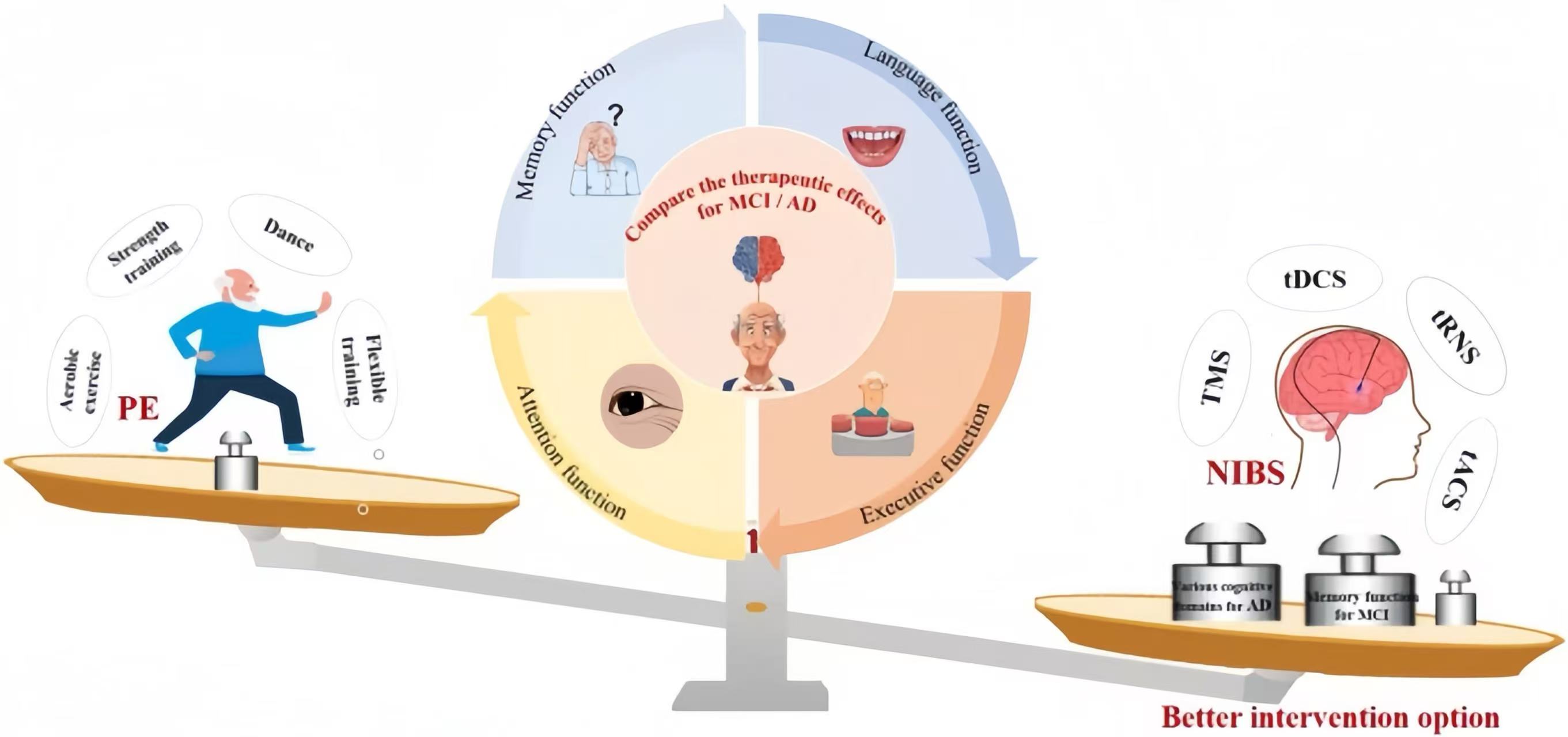
Abstract
Non-invasive brain stimulation (NIBS) and physical exercise (PE) intervention are currently the main and promising non-pharmacologic therapies for Alzheimer’s Disease (AD) or Mild cognitive impairment (MCI), but it is not clear which one is the most effective. Therefore, the aim was to compare the effectiveness of NIBS and PE interventions on cognitive function in MCI/AD, which can further elucidate their advantages and disadvantages in cognitive efficacy and facilitate the optimization of treatment strategies based on the specific cognitive status of patients. Randomized controlled trials (RCTs) were searched from online databases until December 2023. Standardized Mean Changes pre- and post-treatment were calculated for cognitive outcomes measures. 79 RCTs met the inclusion criteria. For the global cognitive scale, PE significantly affected AD and MCI. Both NIBS and PE had a sustained and significant impact on AD/MCI based on the follow-up. In sub-category functions, NIBS had a significant effect on memory for both AD and MCI. However, PE only had a significant effect on AD, not on MCI. For executive function, only NIBS had a significant effect on AD. For language, NIBS and PE both had a significant impact only on AD. For attention, the only significant effect was NIBS on AD. NIBS significantly affects more cognitive domains of AD than PE, and significantly improves the memory function of MCI. Given the current evidence, NIBS appears to be a more promising intervention approach for delaying cognitive decline in patients with MCI or AD compared to PE.
Highlights
• The current study is the first meta-analysis to compare the comparative efficacy of NIBS and PE interventions on various cognitive domains, for MCI or AD patients.
• NIBS intervention has clear positive effect on various cognitive domains for patients with AD, and significant effect on the memory function for MCI.
• NIBS is promising to be a better intervention approach to delay cognitive decline in MCI and AD than PE.


